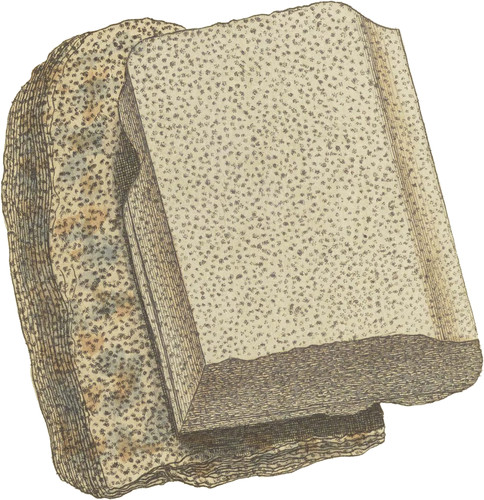 Enlarge
Enlarge
British Mineralogy
Common Argillaceous Slate, or Schistus
- Class 2. Earths.
- Order 2. Aggregate.
- Syn.
- Schistus. Linn. Syst. ed. 13. 3. 37.
- Argillite. Kirw. 354.
- Argile schisteuse. Haüy, 4. 446.
- Clay Slate. Jameson’s Mineral. 1. 334.
It is not always that the substance which contains the same ingredients as Slate, has the schistose fracture, as appears by its being turned in a lathe on some occasions. It is rather remarkable that the Snake-Stone from Ayrshire is a variety of the same substance as Slate, but is not generally recognized to be such, on account of its possessing the slaty fracture when in large pieces only, not showing it when broken small. It is imported as a valuable and truly useful article in many branches of manufacture; as for smoothing copper, marble, &c. For the latter it is formed into the shape of mouldings, as in the upper figure. This substance is known in a great measure by its being so regularly spotted, which, perhaps, has obtained it the appellation of Snake-Stone, by which it is well known among workmen. The light brown colour is analogous to the unspotted part of a snake’s skin, I have gathered nearly the same in Cornwall, and some varieties are to be found, with the dark spots beautifully relieved by satiny Talc of a looser texture:—see the under figure. I have specimens nearly like it, but more indurated, from Keswick. The black spots seem to be Hornbtend, Chlorite, or Manganese.
In the upper specimen the black is generally of an equal hardness and texture with the rest, or it would not suit the workmen. When a stone from any quarry is found to have the proper qualities, it becomes of much consequence, and is a valuable article of commerce.

